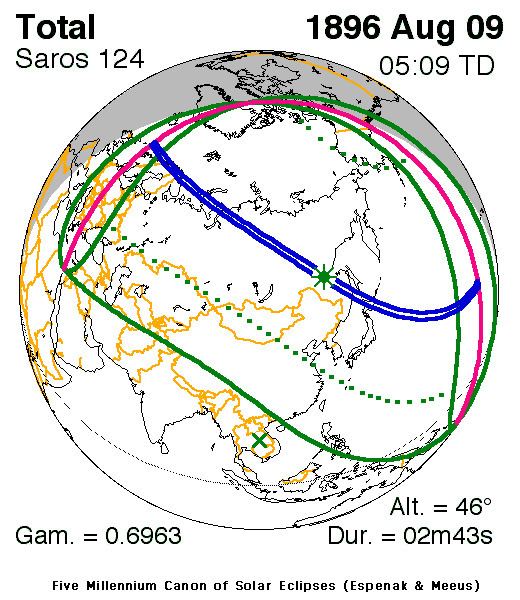Nature Total Magnitude 1.0392 Max. width of band 182 km (113 mi) Start date August 9, 1896 | Gamma 0.6964 Duration 163 sec (2 m 43 s) Greatest eclipse 5:09:00 | |
 | ||
A total solar eclipse occurred on August 9, 1896. A solar eclipse occurs when the Moon passes between Earth and the Sun, thereby totally or partly obscuring the image of the Sun for a viewer on Earth. A total solar eclipse occurs when the Moon's apparent diameter is larger than the Sun's, blocking all direct sunlight, turning day into darkness. Totality occurs in a narrow path across Earth's surface, with the partial solar eclipse visible over a surrounding region thousands of kilometres wide. It was visible across Europe, Asia, and Japan.
Related eclipses
It is a part of solar Saros 124.
References
Solar eclipse of August 9, 1896 Wikipedia(Text) CC BY-SA
